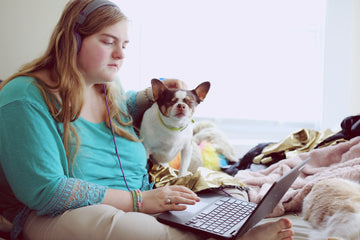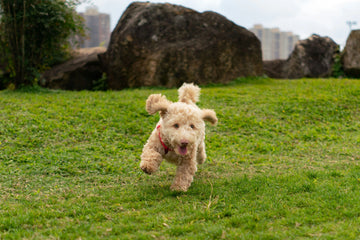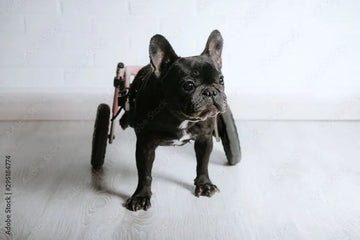When caring for a disabled dog, the most important thing to remember is to treat them as if they were never disabled. They don’t know they’re any different from other dogs. Disabilities don’t necessarily make a dog’s life sad or difficult, as long as they receive the right care, patience, and love.

I. Creating a Cozy and Safe Home for Your Disabled Dog
The first thing to consider is their home environment. Think of it like baby-proofing your house but for your furry friend. Small adjustments can greatly improve their comfort and mobility.
-Clutter-Free Environment: A clean, organized space makes it easier for your dog to navigate. Keep the furniture in place to avoid confusion, especially if your dog has vision problems. A quiet, dedicated area for rest is also important, away from busy foot traffic and stairs.
-Non-Slip Floors: Slippery floors can be dangerous for dogs with mobility issues. Add non-slip mats or rugs to prevent falls and injuries.
-Use Mobility Aids: For dogs struggling with movement, mobility aids like wheelchairs, slings, and harnesses can be life-changing. These tools allow your dog to move freely and maintain independence.
-Comfortable Resting Area: Ensure your dog has a cozy and supportive place to rest. Orthopedic beds, memory foam, or breathable bedding help prevent pressure sores and reduce joint pain. Some disabled dogs can get cold easily, so a warm blanket or a pet-safe heating pad may help keep them comfortable.

II. Supporting Your Disabled Dog’s Emotional Well-being
It’s not just about their physical needs; emotional support is crucial for a happy and healthy life.
-Stick to a Routine: Dogs, especially those with disabilities, thrive on routine. Set regular feeding times, exercise schedules, and play sessions to provide stability and reduce stress.
-Mental Stimulation: Despite physical limitations, your dog's mind is still sharp. Engage them with scent games, puzzle toys, or light training.
-Physical Affection and Interaction: Disabled dogs, like all dogs, need love and affection. Regular petting, gentle massages, or simply sitting with them can provide comfort. Massages help improve circulation and soothe their muscles.
-Socialization and Inclusion: Allow your disabled dog to interact with other pets or people when possible. This prevents isolation and provides emotional enrichment. You can also try hydrotherapy, which not only helps with mobility but provides a fun way for your dog to exercise in a low-impact environment.

III. FAQ
Q1:Do deaf dogs have more behavioral problems?
A: Not necessarily! They just communicate differently. Using hand signals and positive reinforcement can help make training smooth. Some deaf dogs might bark more, but it’s just their way of expressing themselves.
Q2: Can a disabled dog live with other pets?
A: Yes, absolutely! Disabled dogs can get along just fine with other pets. Just introduce them slowly, give them their own space, and ensure everyone is comfortable with each other.
Q3: Can my disabled dog still enjoy walks?
A: Yes! Many disabled dogs can still enjoy walks, but it’s important to adjust the pace and route to their abilities. Shorter, slower walks or even stroller rides can be great alternatives. The key is to listen to your dog’s body and avoid overexertion. Some dogs may also benefit from special mobility aids like dog wheelchairs to help them participate in outdoor activities.
Q4: How can I help my disabled dog stay active?
A: Even if your dog has mobility limitations, it’s important to keep them engaged in some form of physical activity. Low-impact exercises, such as swimming or gentle leash walks, can help them stay fit without putting too much strain on their body. Interactive toys and mental challenges can also keep them active mentally and emotionally.
Q5: Can a disabled dog live a long life?
A: Many disabled dogs can live long, happy lives with proper care. Their lifespan will largely depend on the type and severity of their disability, as well as how well they’re supported in terms of nutrition, exercise, and medical care. Regular vet visits and monitoring their condition can help them live as comfortably and healthily as possible.

Caring for a disabled dog comes with challenges, but it’s also deeply rewarding. With a few adjustments and a lot of love, these dogs can enjoy life just as much as any other. Whether it’s creating a safe home, providing emotional support, or simply spending quality time together, every effort makes a difference. At the end of the day, what matters most is that they feel safe, loved, and happy.
The information provided above is for reference purposes only and should not replace professional veterinary advice.





